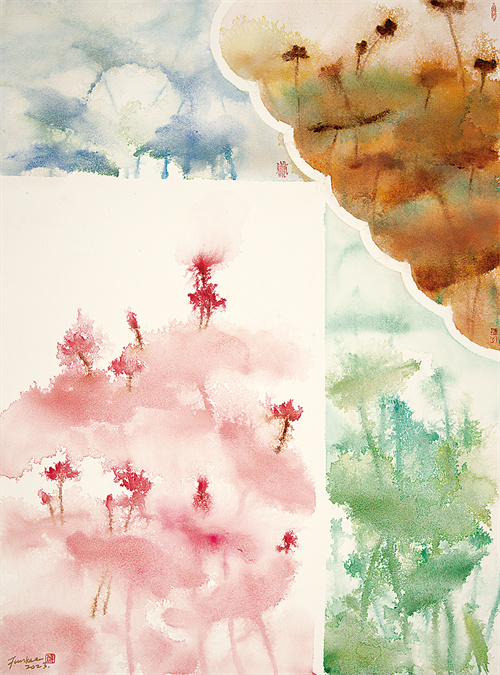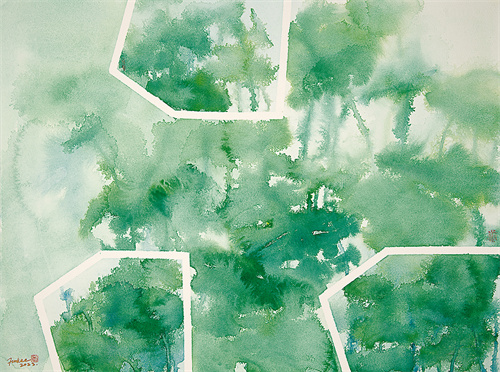Amazing Destiny in the Mirror
A mirror is a common item in daily life and an indispensable item for people to dress up and organize their appearance. In ancient times, bronze mirrors were called "Jian". A famous saying from Li Shimin, Emperor Taizong of the Tang Dynasty said that, "Use copper as a mirror (Jian) to correct your clothes; use history as a mirror to understand the ups and downs in life; use people as a mirror to understand gains and losses." The "Jian" is the mirror. It has been further extended to refer to "illuminate ", such as "clear water for discernment", "light can discern people", etc. The mirror is both an objective reflection of the world and a subjective reflection of the inner world. Great ancient Chinese thinker Zhuang Zi put forward the propositions of "Reflecting things purely objectively like a mirror" and "Be kind to give the warmth of spring". He believed that the cycle of life and the changes of the four seasons are objective laws of nature that cannot be changed by personal will. Reflecting things purely objectively like a mirror, which means facing all things in the world with an objective attitude. Whereas being kind to give the warmth of spring means accepting and treating the unchangeable world with a warm feeling like spring.
Mirrors can reflect virtual images of light and shadow, and are also the door connecting reality and illusion. In fairy tales, there are often wonderful stories that spread out when entering into the mirror world. Therefore, in this section, I have used "Amazing Destiny in the Mirror" as the title to show the kaleidoscope-like wonderful perspective through segmentation and express the beauty of the lotus pond. The clear lotus pond is also a kind of mirror. The skylight and cloud shadows overlap with the reflection of the lotus on the water surface, showing a wonderful picture of "Water and sky are one color". The creation of "Spirit Mirrors in the Lotus Pond" is inspired by the vivid mirror. The picture is divided into fragments, as if the sky is broken on the water of the lotus pond. The emerald green lotus pond and the clear sky merge into one, as if entering the wonderful world of fairy tales. The segmented parts form independent areas, enriching and exciting the layers of the picture, while the unified color tone returns the picture to the overall lotus pond, forming a complete theme composed of fragmented collections.
The sense of layering and wonderful perspective is the focus of this part. The beauty of the lotus pond is not a single plane, but is composed of the moods expressed in different moments and environments. In "Four Seasons", I have used a four-part composition to simultaneously show different impressions of the lotus pond. The contrast of the four colors is like a jigsaw puzzle pieced together to form a colorful lotus pond, which is harmonious and unified in the wonderful collision.
鏡中奇緣
鏡,是日常生活中常見的物品,是人們梳妝、整理儀容必不可少的物件。古時稱銅鏡為“鑒”,唐太宗李世民有名言曰:“以銅為鑒,可正衣冠;以史為鑒,可知興替;以人為鑒,可明得失。”其中的“鑒”即鏡子。再引申指“照”,如“水清可鑒”“光可鑒人”等。鏡子既是世界的客觀映照,也是內心世界的主觀反映。莊子提出“用心若鏡”和“與物為春”的主張,認為生命的輪回、四季的更迭是自然界的客觀規律,不會因個人意志而轉移。用心若鏡,即以客觀的心態應對世間萬物;而與物為春,則是以如春天般溫暖的情懷去接納與對待無法改變的世界。
鏡子能夠反射出光影的虛像,也是連接現實與虛幻的門扉。童話中常有進入鏡中世界展開的奇妙故事。因此,這個部分中,我以“鏡中奇緣”為題,通過畫面分割來展現出萬花筒式的奇妙視角,表現荷塘的美。明淨的荷池亦是一種鏡面,天光雲影在水面與荷的倒影交疊,展現出一幅奇妙的“水天一色”的畫面。《潭空靈鏡入荷塘》便是以靈動的鏡子為靈感而創作,畫面被分割成零碎的幾片,仿佛天空打碎在荷塘的水面,翠綠的荷池與清澈的天空融為一體,仿佛進入了童話中的奇妙世界。分割的部分形成了獨立的區域,令畫面的層次變得豐富精彩,而統一的色調又將畫面回歸為荷塘的整體,形成了由片段式集合而成的完整主題。
層次感與奇妙的視角是這個部分的表現重點,荷塘的美並非單一的平面,而是由不同的瞬間、不同的環境下表現出的情態所構成的,在《四時常若》中,我以四分式的畫面構成同時展現出荷塘的不同印象,四種色彩的對比仿佛七巧板一般拼湊成多姿多彩的荷塘,在奇妙的碰撞中和諧統一。

蕭芬琪 四時常若 76.5cm×56.5cm 2023年

蕭芬琪 潭空靈鏡入荷塘 56.5cm×76.5cm 2023年